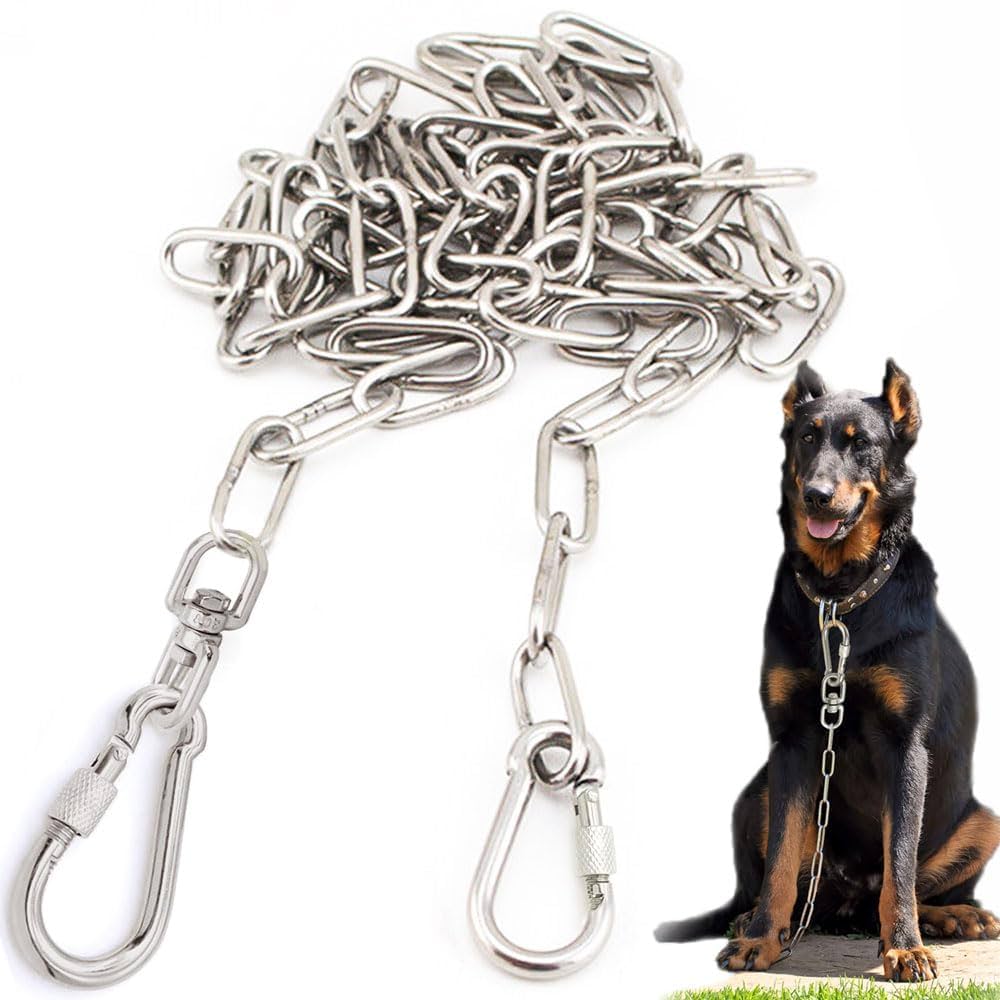Walking your dog should be an enjoyable experience for both pet and owner. However, for many, leash pulling turns daily walks into a frustrating tug-of-war. While training and behavior modification are critical for resolving this issue, the right tools can make a world of difference. Among the most commonly used training tools are dog chains, which can play an essential role in curbing leash pulling and improving overall pet training.
This article explores how dog chains function, their benefits in a training regimen, and how to use them safely and effectively.
What Are Dog Chains?
Dog chains refer to metal link collars, typically made from stainless steel or nickel-plated steel, and are used for training purposes. These include:
- Choke chains (slip collars): Tighten momentarily during leash corrections.
- Prong collars: Feature blunted prongs that apply even pressure around the neck.
- Martingale chains: Combine fabric and chain to prevent over-tightening.
These chains are designed to provide controlled corrections that mimic the way dogs naturally communicate through physical pressure and release.
Understanding Leash Pulling Behavior
Before diving into how dog chains help, it’s important to understand why dogs pull on the leash:
- Excitement: Dogs often pull out of eagerness to explore.
- Lack of training: Without leash manners, dogs don’t know how to walk calmly.
- Instinct: Some breeds have a natural drive to lead or pull.
- Reinforcement: If pulling gets them where they want to go, they keep doing it.
Effective pet training requires correcting this behavior early—before it becomes a habit. This is where dog chains come into play.
How Dog Chains Help Prevent Leash Pulling
1. Immediate Feedback
The primary benefit of dog chains is that they provide instant feedback. When a dog pulls, the chain tightens momentarily, signaling that the behavior is undesirable. Once the dog stops pulling, the tension is immediately released.
This “pressure and release” method is a form of communication that dogs understand well, especially when consistently paired with commands like “heel” or “easy.”
2. Enhances Communication Between Dog and Handler
Dog chains improve communication during pet training sessions by providing clear, physical cues. A gentle tug of the chain can serve as a correction without the need for loud commands or harsh verbal scolding.
Over time, the dog learns that walking calmly at your side means no pressure—while pulling results in a quick, gentle correction.
3. Controls Strong or Reactive Dogs
For large, strong, or reactive dogs, a regular collar or harness may not offer enough control. A well-fitted dog chain offers more leverage, allowing the handler to manage the dog safely and effectively, even in high-distraction environments.
This is especially helpful during the early stages of leash training or in cases where pulling has already become a reinforced behavior.
Different Types of Dog Chains for Leash Pulling
1. Slip Chains (Choke Chains)
- Simple design that tightens with tension.
- Works through correction and release.
- Best used by experienced handlers or under the guidance of a trainer.
2. Martingale Chains
- Safer alternative to choke chains.
- Prevents the dog from backing out of the collar.
- Only tightens to a limited degree, reducing risk of injury.
3. Prong Collars (with metal links)
- Distribute pressure evenly around the neck.
- Blunted prongs simulate a mother dog’s correction.
- Effective for powerful pullers but should be fitted and used properly.
Each type has its use depending on the dog’s behavior, size, and training level.
Benefits of Using Dog Chains in Pet Training
Durable and Long-Lasting
Made from metal, dog chains are incredibly durable—ideal for daily use and long training sessions. They don’t fray or stretch like fabric collars, making them a lasting addition to your training toolkit.
Low Maintenance
Metal chains don’t absorb odors, are easy to clean, and hold up in all weather conditions—rain, mud, or snow.
Professional-Grade Results
Dog chains are often used by professional trainers, especially when dealing with leash reactivity, aggression, or advanced obedience training.
Important Tips for Safe Use
While dog chains can be effective, they must be used responsibly to avoid causing harm or fear:
1. Proper Fit Is Crucial
The chain should sit high on the dog’s neck, just behind the ears—not low around the shoulders. This placement allows for quick, effective corrections without choking.
2. Never Use Excessive Force
Corrections should be light and quick—not jerky or harsh. The goal is to redirect, not punish.
3. Supervise and Train Properly
Don’t leave a dog unsupervised with a chain collar. Enroll in a basic training class or consult a certified trainer to learn proper use.
4. Use as a Temporary Tool
Dog chains are best used as part of a structured pet training plan. Once the dog learns proper leash behavior, you may transition to a flat collar or harness.
Are Dog Chains Right for Every Dog?
Not necessarily. While they are effective for many dogs, some may benefit more from harnesses or head halters, especially if:
- They have respiratory issues.
- They are fearful or overly sensitive.
- You’re a first-time dog owner unfamiliar with correction-based tools.
Always consider your dog’s temperament and consult with a professional before deciding.
Complementing Dog Chains with Positive Reinforcement
For the best training outcomes, combine the use of dog chains with positive reinforcement techniques:
- Reward calm walking with treats or praise.
- Use consistent verbal cues.
- Practice short, focused training sessions daily.
The chain helps discourage pulling, while positive reinforcement teaches the dog what you do want them to do—walk calmly by your side.
Final Thoughts
Dog chains can play a powerful role in preventing leash pulling when used correctly and compassionately. As part of a balanced pet training approach, they help establish clear communication, enhance control, and encourage better behavior during walks.
However, these tools are not a cure-all. Success depends on pairing the right tool with patience, consistency, and a solid understanding of canine behavior. If used responsibly, dog chains can turn frustrating walks into enjoyable, structured outings for both you and your pet.Walking your dog should be an enjoyable experience for both pet and owner. However, for many, leash pulling turns daily walks into a frustrating tug-of-war. While training and behavior modification are critical for resolving this issue, the right tools can make a world of difference. Among the most commonly used training tools are dog chains, which can play an essential role in curbing leash pulling and improving overall pet training.
This article explores how dog chains function, their benefits in a training regimen, and how to use them safely and effectively.


